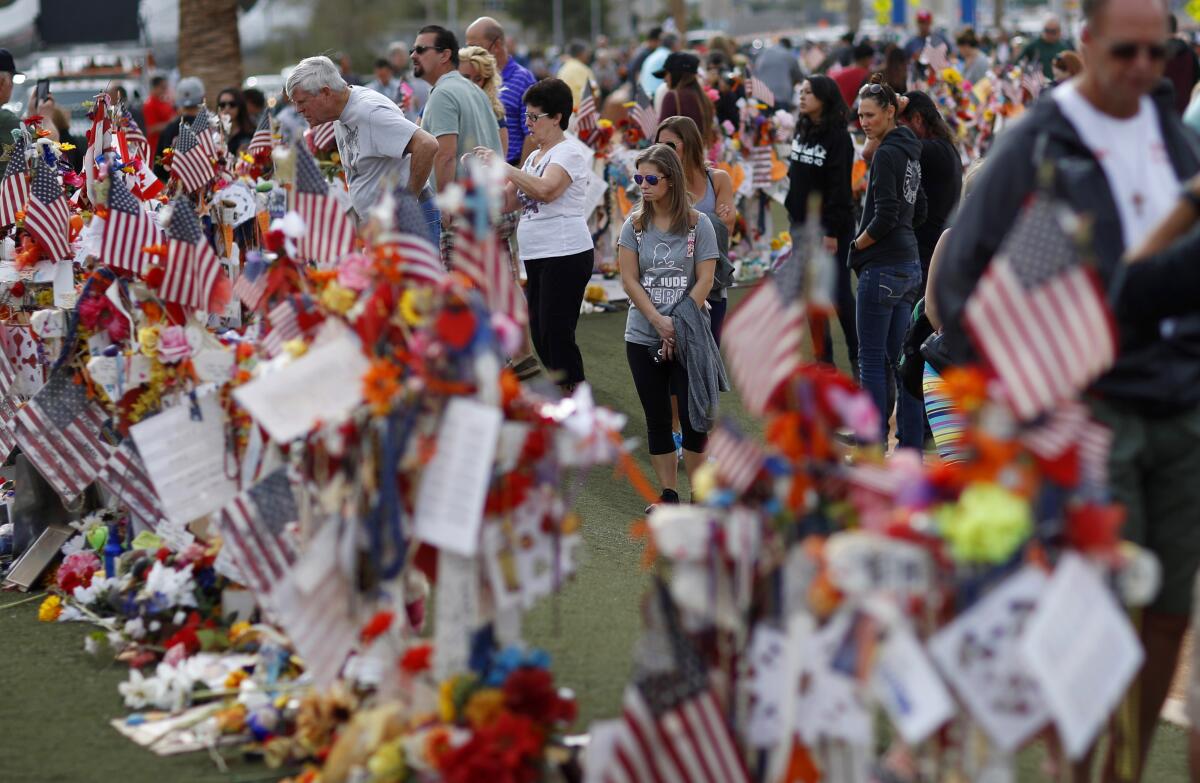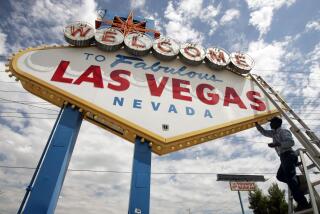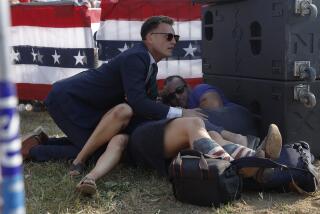Vegas survivors signal hope even as mass shootings march on

- Share via
LAS VEGAS — It’s been five years since carnage and death sent his family running into the night, leaving them separated and terrified as a gunman rained bullets into an outdoor country music festival crowd on the Las Vegas Strip.
The memories don’t fade, they sharpen, William “Bill” Henning said as he prepared for ceremonies in Las Vegas marking the Oct. 1, 2017, massacre.
“Chaotic and unreal,” he recalled. “A human stampede. People were bleeding and screaming and running. We all got separated. We didn’t know who was alive. That was the most difficult.”
He’s now part of a survivor community thousands strong, one that’s helped him sort through the horror of what happened during the deadliest mass shooting in modern U.S. history. Fifty-eight people were killed and more than 850 were injured among a crowd of 22,000.
In the years since, the grim drumbeat of mass shootings has continued: schools in Uvalde, Texas, and Parkland, Fla.; grocery stores in Buffalo, N.Y., and Boulder, Colo.; bars in Dayton, Ohio, and Thousand Oaks; a city building in Virginia Beach, Va.; a Walmart in El Paso. Meanwhile, the debate over gun laws in the U.S. rages on, including a renewed challenge to the federal regulation sparked by the Las Vegas shooting.
The massacre is part of a horrifying uptick in shootings with especially high numbers of people killed, said James Alan Fox, a professor of criminology, law and public policy at Northeastern University in Boston. Five of the nine mass shootings in modern U.S. history with more than 20 people killed have taken place since 2016, starting with the Pulse nightclub in Orlando, Fla., and continuing through the elementary school shooting in Uvalde, Texas.
“The severity of public mass shootings has increased in the past few years. That’s clear,” Fox said. “And worrisome.”
Fox oversees a database maintained by the Associated Press, USA Today and Northeastern University that tracks mass killings involving four or more people slain, not including the perpetrator. The information is drawn from media reports, FBI data, arrest records, medical examiners’ reports, prison records and other court documents.
Watching the steady stream of shootings in the U.S. is tough for survivors, said Tennille Pereira, director of a Clark County recovery and support program called the Vegas Strong Resiliency Center.
“I know when it keeps happening, people often express feelings of hopelessness,” Pereira said. “I think the big thing for Las Vegas is to be able to share with those other communities that healing does occur, and that there is hope.”
For people like Henning, part of that hope has been the bond formed with other survivors. The retired computer technician was celebrating his 71st birthday at the Route 91 Harvest festival with friends, his wife, daughter and three teenage grandchildren when the gunfire began. While fleeing, he suffered a knee injury that required surgery, but his group made it out without being struck by gunfire.
“At first, the first few years, it’s not really sinking in,” he said. “The more we organize ourselves, the more that we see each other, it actually brings us back to how serious this situation was.”
Many in Las Vegas won’t name the man who fired 1,057 bullets, authorities say, from 32nd-floor windows of the Mandalay Bay resort during a span of time now memorialized in a Paramount+ documentary, “11 Minutes.”
“We don’t want to give him any more power, credibility, infamy,” Pereira said. “In this survivor population, words matter. We don’t use the word ‘anniversary.’ We use ‘remembrance.’ We try not to use the word ‘victims.’ We try to use the word ‘survivor.’”
Police and the FBI spent months investigating and concluded that gunman Stephen Paddock acted alone, meticulously planned the attack and intentionally concealed his actions. He amassed an arsenal of 23 assault-style rifles in his hotel room, including 14 fitted with bump-stock devices that help the weapons fire rapidly.
Caches of weapons also were found at the shooter’s homes in Reno and Mesquite, Nev. He killed himself before police reached him in his hotel room, and officials said they never identified a clear motive for the attack.
Shortly after the shooting, the Trump administration banned bump stocks under the same federal laws that prohibit machine guns. Gun rights advocates sued, saying the weapons didn’t qualify as machine guns and it would take an act of Congress to ban them.
The ban has survived several court challenges. But a federal appeals court in New Orleans revived a case there in June, the same day the U.S. Supreme Court handed down a ruling expanding gun rights. That case marked the high court’s first major gun decision in more than a decade and has sparked a wave of court challenges to gun laws around the country.
Meanwhile, in Las Vegas, survivors are working toward a permanent memorial on a corner of the former Las Vegas Strip festival ground.
A sunrise remembrance ceremony is set Saturday at the Clark County Government Center, and the names of those killed will be read at 10:05 p.m. — the time the shooting started — at the downtown Las Vegas Community Healing Garden.
Survivor Sue Nelson, 67, said she fled from her front-row seat and hid for hours on the Las Vegas Strip.
“I’m not afraid anymore,” she said. “It makes a big difference in healing.”
Ritter reported from Las Vegas and Whitehurst from Washington.
More to Read
Sign up for Essential California
The most important California stories and recommendations in your inbox every morning.
You may occasionally receive promotional content from the Los Angeles Times.










